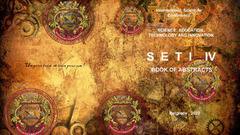Приказ основних података о документу
The influence of the border materiality on the experience of territoriality in housing
| dc.creator | Simonović Alfirević, Sanja | |
| dc.creator | Alfirević, Đorđe | |
| dc.date.accessioned | 2022-10-27T13:42:48Z | |
| dc.date.available | 2022-10-27T13:42:48Z | |
| dc.date.issued | 2022 | |
| dc.identifier.isbn | 978-86-81512-07-4 | |
| dc.identifier.uri | http://raumplan.iaus.ac.rs/handle/123456789/665 | |
| dc.description.abstract | The notion of territoriality is widespread and is present in many areas of human activity. This term is usually associated with the need to demarcate space, which individuals or groups use and defend. In science, so far, various parameters that determine the extent of the experience of territoriality have been investigated, among others, control, security, personalization and protection of space.. In the research, through the deductive method and the analysis of certain characteristic housing models - residential communities, residential buildings and residential units, it will be considered on a general level to what extent spatial boundaries provide different degrees of privacy and enable people to exercise control over their own activities and the activities of others. The physical and functional framework and the social division of space can increase or decrease the possibilities for resident activities. The goal of this research is to consider the relationship between the experience of territoriality of an individual or a group in housing and the character of the boundaries that determine the domain of the territory, i.e. certain spatial levels. Another goal is to reconsider the thesis according to which the character of the boundary is one of the key parameters that influence the experience of territoriality in housing. If the boundary of the territory is more material, solid, concrete or closed, the experience of territoriality is more present, while if the boundary of the territory is immaterial, ephemeral, softer, flexible or more open, it diminishes the experience of territoriality and has the opposite effect. | sr |
| dc.language.iso | en | sr |
| dc.publisher | Belgrade : IRASA – International Research Academy of Science and Art Belgrade | sr |
| dc.relation | info:eu-repo/grantAgreement/MESTD/inst-2020/200006/RS// | sr |
| dc.rights | openAccess | sr |
| dc.rights.uri | https://creativecommons.org/licenses/by/4.0/ | |
| dc.source | Fourth International Scientific Conference ′′Science, Education, Technology and Innovation – SETI IV 2022 | sr |
| dc.subject | Housing | sr |
| dc.subject | architecture | sr |
| dc.subject | territoriality | sr |
| dc.subject | boundary | sr |
| dc.subject | experience | sr |
| dc.subject | materiality | sr |
| dc.title | The influence of the border materiality on the experience of territoriality in housing | sr |
| dc.type | conferenceObject | sr |
| dc.rights.license | BY | sr |
| dc.citation.spage | 414 | |
| dc.citation.epage | 426 | |
| dc.citation.rank | M33 | |
| dc.description.other | Editors: Vladica Ristić, Marija Maksin, Jelena Bošković | sr |
| dc.identifier.fulltext | http://raumplan.iaus.ac.rs/bitstream/id/2780/SETIIV2022_M33.pdf | |
| dc.identifier.rcub | https://hdl.handle.net/21.15107/rcub_raumplan_665 | |
| dc.type.version | publishedVersion | sr |

